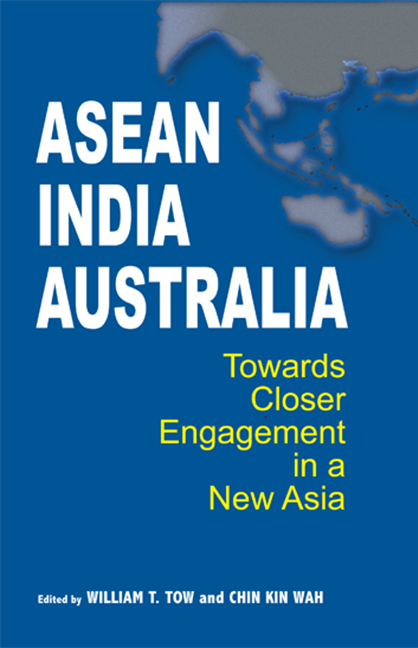Book contents
- Frontmatter
- Contents
- Preface
- Contributors
- List of Abbreviations
- Introduction
- Part I Emerging Regional Security
- Part II Energy Security
- Part III Climate Change
- 8 The Strategic Implications of Climate Change
- 9 Climate Change: An ASEAN Perspective
- 10 Indian Perspectives on Climate Change
- Part IV Maritime Security
- Part V Law Enforcement/Combating International Crime
- Conclusion
- Bibliography
- Index
9 - Climate Change: An ASEAN Perspective
from Part III - Climate Change
Published online by Cambridge University Press: 21 October 2015
- Frontmatter
- Contents
- Preface
- Contributors
- List of Abbreviations
- Introduction
- Part I Emerging Regional Security
- Part II Energy Security
- Part III Climate Change
- 8 The Strategic Implications of Climate Change
- 9 Climate Change: An ASEAN Perspective
- 10 Indian Perspectives on Climate Change
- Part IV Maritime Security
- Part V Law Enforcement/Combating International Crime
- Conclusion
- Bibliography
- Index
Summary
Introduction
Indonesia hosted the United Nations meeting in Bali in December 2007, which launched the current round of international climate change negotiations. The aim is to reach an agreement by the end of 2009 on new arrangements to curb global warming. These are supposed to start in 2012 when the existing control mechanism, the Kyoto Protocol, expires. Adopted in Kyoto, Japan, in 1997, the protocol is an agreement linked to the 1992 U.N. Framework Convention on Climate Change (UNFCCC). More than 180 states have ratified the Kyoto Protocol, which entered into force in 2005.
But as the Bali meeting showed, the negotiations on a successor agreement are contentious. Among the many fissures are arguments over which countries are most responsible for accumulated greenhouse gas (GHG) emissions; which have the highest per capita emissions; and which have the fastest growing emissions. This debate sets the scene for one of the most crucial decisions on climate change: how will responsibilities and costs for limiting GHGs be apportioned? The way this is done will affect growth, employment, living standards, and the quality of life in many economies. It will also reshape global competitive advantage as energy-intensive industries and sectors in some countries are hit harder than others elsewhere by GHG emission controls.
Kyoto and Southeast Asia
Under the Kyoto Protocol, only thirty-seven industrialized countries and the European Union (called Annex 1 Parties under the UNFCCC) were obliged to reduce GHGs and set binding national targets for doing so. They undertook to cut emissions by an average of at least five per cent below 1990 levels over the five-year period from 2008–12.
Developing countries (termed Non-Annex 1 Parties), which form a big majority of U.N. member states, did not have to make commitments to limit GHGs. Among them were the ten countries comprising the Association of Southeast Asian Nations (ASEAN) — Brunei, Cambodia, Indonesia, Laos, Malaysia, Myanmar, the Philippines, Singapore, Thailand, and Vietnam. They are free riders on the protocol. Since the advanced economies were responsible for most of the build-up in man-made global warming emissions in the more than 200 years since 1800 and the industrial revolutions in Europe and North America, the UNFCCC and its protocol applied the principle of “common but differentiated responsibilities” to the parties, allowing Non-Annex 1 developing countries to shoulder a much lighter load than Annex 1 advanced economies.
- Type
- Chapter
- Information
- ASEAN-India-AustraliaTowards Closer Engagement in a New Asia, pp. 153 - 171Publisher: ISEAS–Yusof Ishak InstitutePrint publication year: 2009



